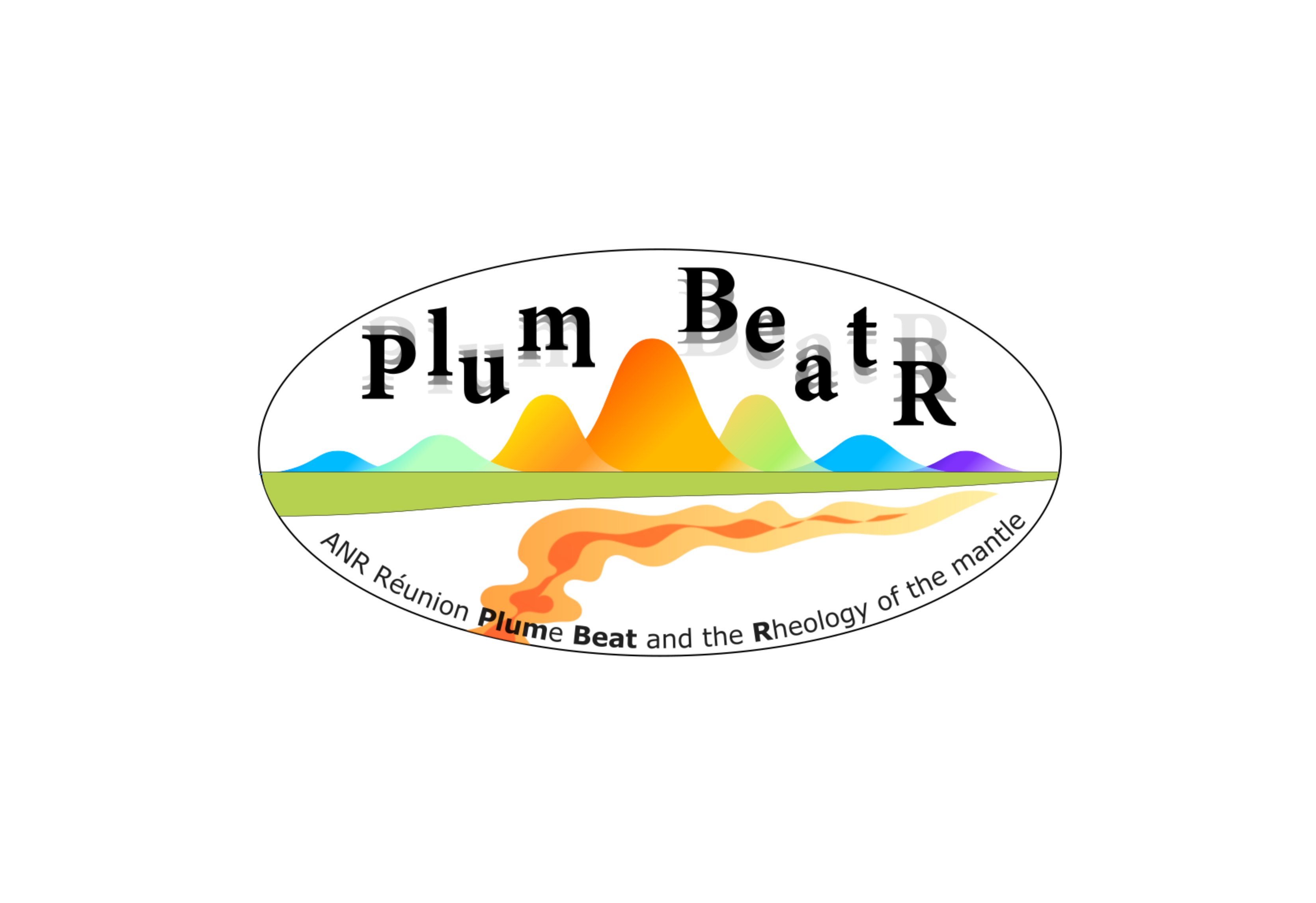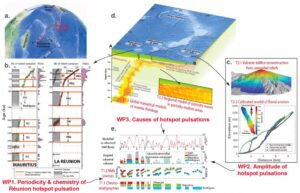ANR Plum-BeatR
Réunion Plume Beat and the Rheology of the mantle
Funding : ANR PRC, 403 515 € (reference ANR- 23-CE49-0009)
Coordinator(s):
- Vincent Famin, IPGP, Univ. Réunion (PI)
- M. Arnould, LGL-TPE
Host Institutions : IPGP
Partners : Université Lyon 1
Duration : 2023 – 2027

Quelques chiffres clés
ANR funding (in k€)
Funded PhD thesis
Researchers involved
Research institutes from 4 different countries
Abstract
Terrestrial hotspots exhibit fluctuations in their magma emission rates, over periods of 1 to 20 Ma, indicating changes in magma production within the underlying mantle plumes. The periodicity of these fluctuations indirectly helps to determine the mechanisms of magma production, and to better understand the interactions between the plume and the adjacent mantle.
Recently, synchronous magmatic activity fluctuations have been identified on two islands of the Réunion hotspot, Réunion and Mauritius, with a period of ~400,000 years over the last three million years (Fig. 1a). This period is an order of magnitude shorter than those identified on other terrestrial hotspots. Given the distance between the two islands (~230 km), this short-period pulse from the Reunion hotspot cannot originate in the lithosphere (≤70 km), leading to our working hypothesis that it is produced in the asthenosphere or deeper. The philosophy of the ANR-funded Plum-BeatR project is to better constrain this Réunion hot spot pulsation, and to take advantage of it to better understand the mantle processes behind mantle plumes.
The project is divided into three work packages (WP). The aim of these three work packages is to describe fluctuations in magmatic activity at the Réunion hotspot on a finer timescale than for other hotspots, and to explore their causes using the latest generation of geodynamic models.

Figure: Objectives and strategy of the Plum-BeatR project. a/ Trace of the Réunion hotspot in the Indian Ocean. b/ Comparison of chronostratigraphies from Mauritius and La Réunion showing synchronous phases of volcanism and quiescence over the last four million years (Famin et al., in prep.). c/ Determination of volumes erupted since the emersion of the Mascarene Islands. d/ Geodynamic processes explored to understand the causes of the Reunion hotspot pulsation. e/ Objective of quantitative comparison of observations (chronostratigraphic, geochemical and geomorphological) and numerical modelling (red, green and blue colors for Reunion, Mauritius and Rodrigues, respectively).
List of the LGL-TPE members involved in the project:
- Maëlis Arnould
- Jean-Philippe Perrillat
- Alexandre Koessler